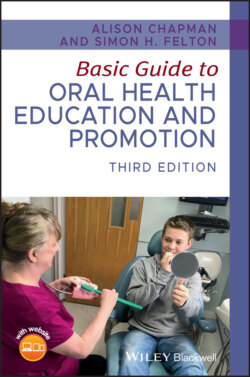Читать книгу Basic Guide to Oral Health Education and Promotion - Alison Chapman - Страница 89
Teeth whitening in the practice
ОглавлениеTeeth whitening carried out in the practice can make a significant difference to the colour of teeth. Whitening does not cause any damage to teeth and can be used for patients over 18 years old. It simply changes the colour of dentine, so it can be used for patients affected by systemic intrinsic staining, such as tetracycline, as well as extrinsic stains caused by tea, coffee, tobacco products, and red wine.
The process uses gels containing hydrogen peroxide (maximum concentration 6%), or chemicals that release hydrogen peroxide (carbamide peroxide, zinc peroxide). Products come in different concentrations, and the higher the concentration the more likely the patient will experience sensitivity. European Union law forbids the use of products containing more than 6% hydrogen peroxide.
Patients can experience sensitivity when undertaking whitening, but this is transient and can be easily managed by the use of sensitive formula toothpastes or remineralising pastes/gels/mousse, such as GC Tooth Mousse® (which contains RecaldentTM).
The gel is applied in the dental surgery or using custom‐made trays at home. The process takes 2–3 weeks, but longer if the tooth shade is towards the blue/grey range. Whitening will not change the colour of crowns or restorations, and so if the patient is to undergo treatment to replace these, whitening should be undertaken first. It can, however, help with stains around the margins of restorations. The consumption of tea, coffee, red wine, turmeric, and tobacco should be avoided during the whitening treatment.
Patients should be advised that teeth whitening is not permanent. It can last anything from a few months to up to 3 years. Generally, the effect will not last long if the patient smokes, drinks red wine, tea, or coffee in significant amounts, which will all restain the teeth.
